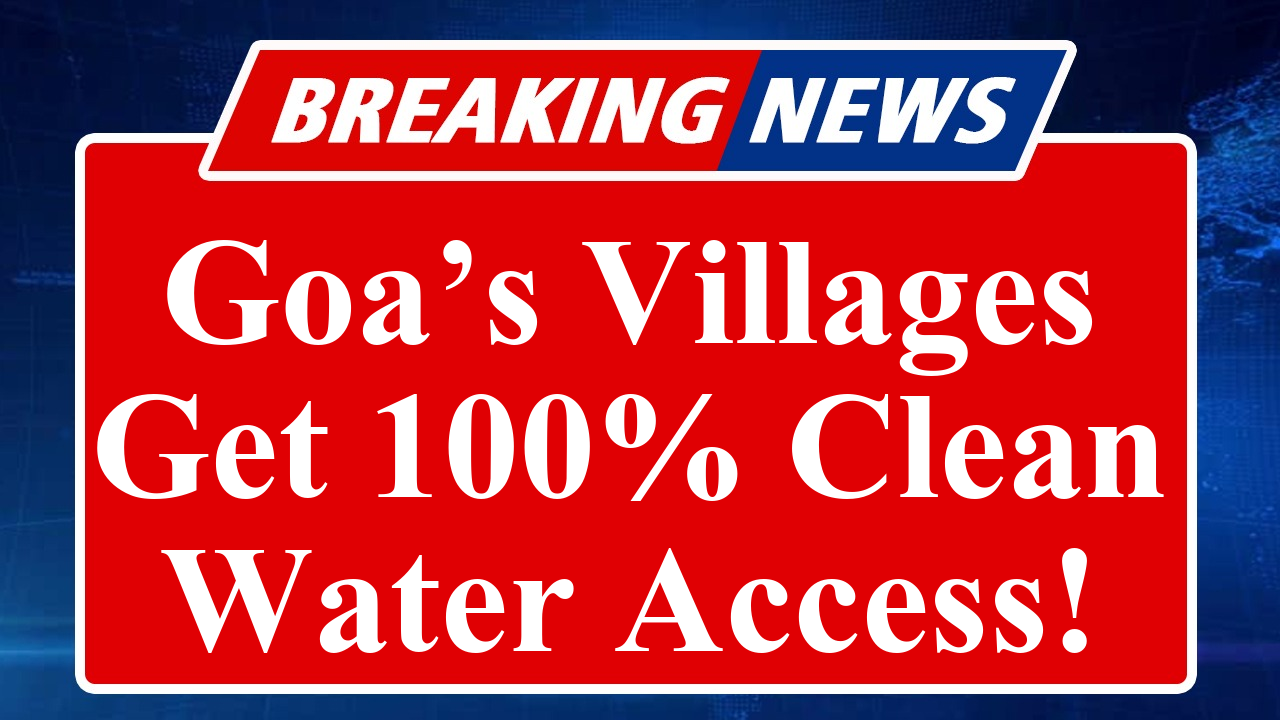Goa has become the first Indian state to provide 100% functional household tap connections under the Jal Jeevan Mission, ensuring clean water access for all rural households. The new village water supply scheme targets remote areas, addressing past oversights and improving water quality. Despite challenges like high turbidity and infrastructure delays, the initiative enhances health and dignity for rural communities.
Goa’s Milestone in Clean Water Access for Rural Villages
Goa has set a national benchmark by achieving 100% functional household tap connections under the Centre’s Jal Jeevan Mission, a feat recognized for its impact on rural water access. The state’s drinking water department (DWD) recently completed a project to provide purified water to 7,458 households in remote areas like Netravali, which previously relied on untreated local water sources. This initiative, costing over Rs 200 crore in the past three years, ensures that all 2.63 lakh rural households in Goa now have access to treated water through individual tap connections.
The scheme focuses on bridging gaps in water supply infrastructure, particularly in underserved villages. According to officials, areas like Netravali faced challenges due to their remoteness, leading to oversight in earlier water supply programs. The DWD identified and connected these households within a year, a milestone celebrated under the Jal Jeevan Mission for its speed and scale. Parsekar, a key figure in the initiative, was honored for making Goa the first state to achieve this target.
However, the state faces ongoing challenges in maintaining consistent water supply. Recent reports highlight interruptions in areas like Tiswadi and Ponda due to clogged filters at the Opa Water Works, caused by high river turbidity from heavy rainfall. Assistant Engineer Sunil Kerkar noted that water with 1mg of finely divided silica per litre has a turbidity of 1NTU, with levels up to 50NTU considered normal. High turbidity requires frequent filter cleaning, which temporarily disrupts supply but was resolved swiftly in the latest incident.
The broader context of Goa’s water management reveals systemic issues. Unchecked development and inadequate water availability assessments by the Town and Country Planning department have exacerbated shortages. For instance, Goa’s daily treated water production stands at 695 million litres per day (MLD), yet demand exceeds this by 62 MLD. In Siolim, the shortfall reaches 7 MLD, over half the village’s requirement. Urban households consume approximately 170 litres per person daily, adding pressure to the system.
To address these challenges, the state is implementing projects like a Rs 21 crore initiative in Agasaim, Bambolim, and Nauxim, launched by Chief Minister Pramod Sawant. This project includes constructing a 2,000m ground-level reservoir and a 650m overhead reservoir to enhance water supply in the St Andre constituency, with completion expected within 18 months. However, the termination of a free water scheme, which provided 16,000 litres daily to 40% of consumers, has sparked debate. Sawant cited misuse, such as washing cars and watering gardens, as the reason for ending the scheme on May 1, noting that treating water costs Rs 20 per litre.
Goa’s efforts align with India’s broader push toward Sustainable Development Goal 6, ensuring clean water and sanitation for all. The Jal Jeevan Mission has not only improved access but also reduced drudgery, particularly for rural women and girls, who previously traveled long distances to fetch water. Community ownership of water supply schemes has been emphasized, with recurring monitoring to maintain functionality. Nationally, India has achieved 99.62% rural drinking water coverage, with over 80% of targeted urban water supply projects under the AMRUT scheme completed, impacting nearly 4 crore urban citizens.
Despite these achievements, concerns persist about sustainability. Experts warn that by 2030, nearly 40% of Indian cities, including those in Goa, could face drinking water shortages due to rapid urbanization and climate fragility. The state’s proactive steps, such as the new village water supply scheme, aim to mitigate these risks, but long-term solutions require coordinated planning and infrastructure upgrades to match growing demand.
Disclaimer: This article is based on recent news reports, official statements, and data from sources like the Times of India, The Hindu, and posts on X. Information is accurate as of July 4, 2025, and subject to change as new developments emerge.

